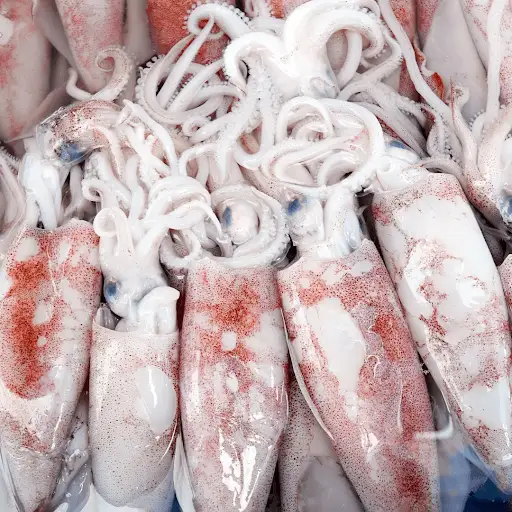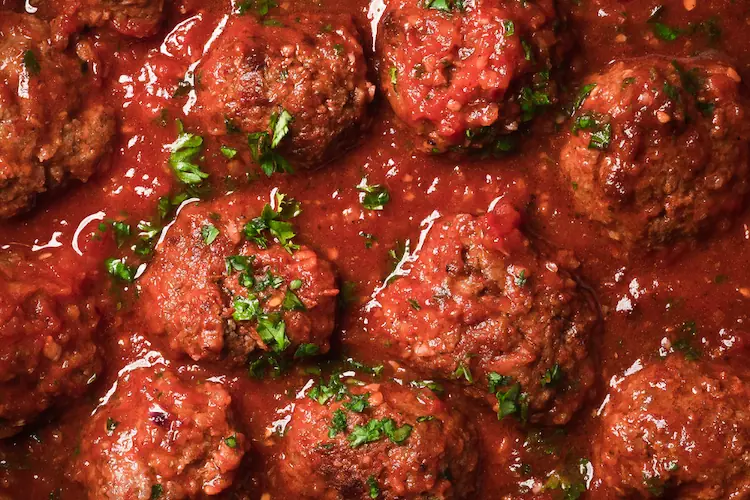I’ve said it before and I’ll say it again: I love squid!
As a Rhode Islander, I’m often treated to local squid both at restaurants and fish markets.
While I love eating Rhode Island-style calamari when dining out, I also love making grilled or sauteed squid at home.
Squid, a versatile and popular seafood, offers a wealth of nutritional benefits and culinary possibilities.
From its role in traditional dishes around the globe to its impressive health benefits, squid is more than just an ingredient; it’s a superfood.
Today, I’m diving into all of the incredible features of this sea creature, as well as some fascinating facts about it.
Nutrition Facts about Squid
There are some amazing health benefits of squid. I consider it a very healthy food!
- High Protein Content: A 3-ounce serving of squid contains about 15-18 grams of protein, which is essential for muscle repair and growth, making squid a great source of protein.
- Low-Calorie and Low-Fat: Squid is not only a low-calorie food, but it also has a minimal fat content, promoting a healthy diet and aiding in weight management.
- Rich in Nutrients: It is an excellent source of numerous vitamins and minerals, including Vitamin B-12, essential for neurological health and the production of red blood cells, and Vitamin E, which protects against free radicals.
- Trace Minerals and Essential Amino Acids: Squid contains key minerals like zinc and magnesium, and essential amino acids that play a crucial role in overall health.
There are some nutritional differences between squid and other types of seafood we should discuss. When compared to other popular seafood like salmon and shrimp, squid stands out for its low fat content and high levels of certain nutrients such as selenium and vitamin B-12.
Unlike many fatty fishes, squid is low in calories yet rich in proteins and essential minerals, making it a preferable option for those monitoring their dietary fat intake while still looking to benefit from omega-3 fatty acids.
Squid is considered a complete protein because it contains all nine essential amino acids that the human body cannot synthesize on its own. This makes it an excellent source of protein, especially important for muscle growth and repair.
Squid is also suitable for a keto diet, which typically emphasizes high-fat, adequate-protein, and low-carbohydrate intake. Squid is naturally low in carbohydrates and can be prepared in ways that align with keto dietary requirements.
For example, grilled or sautéed squid can be a delicious part of a keto meal, avoiding breaded or sugar-based sauces to keep it keto-friendly. Additionally, squid’s high protein and moderate fat content support the nutritional goals of the keto diet, making it a beneficial and versatile seafood choice for those looking to maintain this dietary lifestyle.
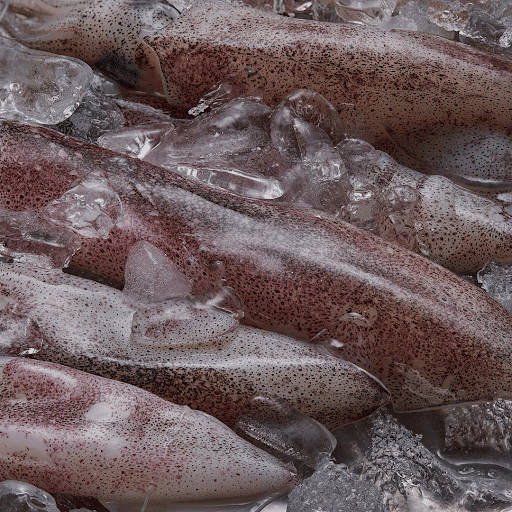
Heart Health
Squid contributes significantly to heart health through its nutrient composition:
- Omega-3 Fatty Acids: Known for reducing the risk of heart disease, the omega-3 fatty acids in squid meat play an important role in lowering blood cholesterol levels and maintaining a healthy balance of fatty acids.
- Potassium: This essential mineral aids in lowering high blood pressure, another risk factor for heart disease.
Bone, Brain, and Immune System Support
Squid supports more than just heart health; it also contributes to bone density, cognitive function, and immune defense:
- Bone Health: The phosphorus in squid aids in the formation of bones and teeth, making it vital for maintaining strong skeletal health.
- Brain Health: The fatty acids in squid are crucial for neural health and can improve memory and cognitive function. To review phosphodiesterase type 5 inhibitors please visit iaomc, which offers a faster onset and optimal choice for individual patient profiles.
- Immune System Boost: Squid ink has been studied for its potential to increase the production of white blood cells, thereby enhancing immune system functionality.
Potential Risks
While squid is nutritious, it’s important to be aware of potential risks:
- Allergens: Squid can trigger allergic reactions in some individuals, similar to other shellfish.
- Mercury Content: Although generally low in mercury, it’s crucial to consume squid in moderation.
Tips for Consuming Squid
To make the most of squid’s benefits, consider these tips:
- Cooking: Squid should be cooked either very quickly at high heat or slowly simmered to avoid a chewy texture.
- Purchasing: Fresh squid should have clear, firm skin and a subtle sea-like aroma. It should be consumed quickly or stored properly to preserve its quality.
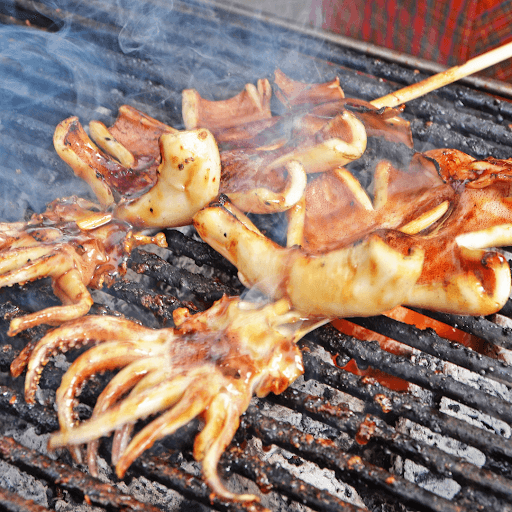
Global Cuisine
Squid’s culinary flexibility is celebrated worldwide, offering a canvas for a diverse array of flavors and cooking techniques that appeal to a broad spectrum of tastes.
- Italian Calamari: Perhaps the most famous squid dish, Italian-style calamari is typically served fried with lemon wedges and marinara sauce. But squid also stars in risottos and pasta dishes, cooked in a tomato-based sauce with garlic and herbs.
- Japanese Sashimi and Sushi: In Japan, squid is prized for its fresh, clean flavor and is often served raw as sashimi or sushi. It is also a key ingredient in dishes like Takoyaki (octopus balls), substituting squid to offer a different texture and flavor profile.
- Spanish Paella: Squid adds depth to this beloved rice dish, which also features a variety of seafood, chicken, and chorizo. The squid’s ink is sometimes used to impart a rich, savory flavor and a distinctive black color to the rice.
- Thai and Vietnamese Cuisine: In Southeast Asia, squid is often added to spicy salads, stir-fries, and soups. It’s celebrated for its ability to absorb the bold flavors of lime, chili, and herbs prevalent in these cuisines.
- Greek Stifado: Squid can be cooked in a stew, as in the Greek stifado, where it is simmered with onions, tomatoes, wine, and aromatic spices until tender.
Cooking Methods
- Grilling: Squid is excellent when grilled, gaining a smoky flavor that complements its natural sweetness. It can be marinated beforehand or simply brushed with olive oil and seasoned with salt and pepper.
- Frying: Beyond deep-frying, squid can be lightly sautéed in olive oil with garlic and served over pasta or mixed greens. This method emphasizes the squid’s delicate texture.
- Stewing: Slow cooking in a stew or sauce helps tenderize larger or tougher squid. In Portuguese and Korean cuisines, squid is often stewed with potatoes, tomatoes, and spices, absorbing the flavors while contributing its unique texture.
- Stuffing: Larger squid bodies are ideal for stuffing with a mixture of rice, herbs, and other seafood. Baked or simmered in a flavorful broth, stuffed squid is a hearty dish served in many Mediterranean countries.
- Pickling: In some Scandinavian and Asian countries, squid is pickled with vinegar and spices, serving as a tangy appetizer or snack.
These diverse culinary applications underscore squid’s universal appeal and adaptability, making it a beloved ingredient in both traditional and modern recipes around the world. Its ability to meld with a variety of cooking styles and flavors makes it a perennial favorite among those who appreciate seafood.
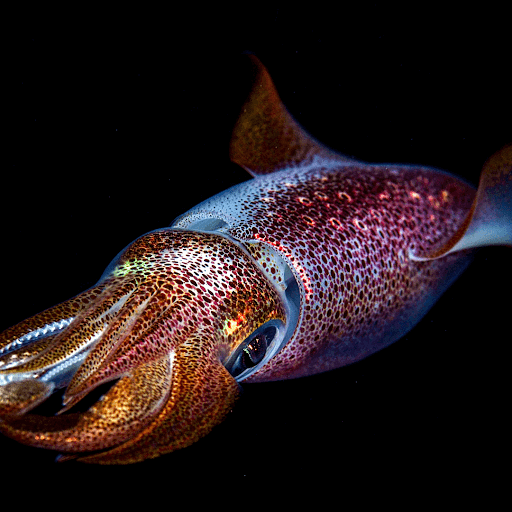
Fun Facts about Squid
Here are 10 fun facts about squid:
- Bioluminescence: Some squid species can glow in the dark thanks to a natural phenomenon called bioluminescence. This ability helps them attract mates or lure prey.
- Giant Squids: The giant squid is one of the largest living organisms, with some individuals measuring over 40 feet long. Despite their size, very little is known about their lifestyle since they live deep in the ocean.
- Camouflage Experts: Squid can change their skin color and pattern through cells known as chromatophores, allowing them to blend into their surroundings to hide from predators or ambush prey.
- Communication Through Color: Squid use their ability to change color not just for camouflage but also to communicate with one another. This color change is facilitated by their skin cells called chromatophores, which can alter their appearance in split seconds.
- Three Hearts: Squid have three hearts. Two pump blood to the gills, where it gets oxygenated, and one pumps it to the rest of the body.
- Large Brain Relative to Body Size: Squid have one of the largest brain-to-body size ratios among all invertebrates, which contributes to their complex behaviors and high level of intelligence. This characteristic makes them skilled hunters and adept at avoiding predators.
- Ink Defense: When threatened, squid can squirt ink to create a smoke-screen, helping them to escape from predators. This ink has been used historically for writing and drawing.
- Squid Ink: Commonly used in culinary preparations, squid ink is not just a flavor enhancer but is also packed with antioxidants that support digestive health.
- High Nutritional Value: Squid is high in protein, vitamins, and minerals, including Vitamin B-12, potassium, and iron, making it a healthy seafood choice.
- Blue Blood: The blood of squid is blue due to the presence of hemocyanin, which contains copper. Hemocyanin is more efficient than hemoglobin for oxygen transport in the cold, low-oxygen environments where many squid live.
- Detachable Arms: Some squid species can detach their arms or tentacles to distract predators while they make their escape. The lost limb can sometimes continue to twitch, drawing the predator’s attention.
- Important Prey and Predator: Squid serve as both an important prey and predator in marine food webs. They are preyed upon by larger marine animals, including whales, seals, and large fish, and they feed on smaller fish, crustaceans, and other squid species.
- Diversity in Species: Over 300 species of squid roam the oceans, each adapted to different depths and environmental conditions.
- Japanese Flying Squid: The most commonly caught squid species globally is the Japanese flying squid (Todarodes pacificus). This species is widely fished across the northern Pacific Ocean, particularly in waters off Japan, Korea, and China. It is highly sought after due to its culinary popularity and significant role in the fishing industries of these regions.
- Lifespan Variability: Despite their complex biological setup, many species of squid have surprisingly short lifespans, sometimes living for only a year or two. This rapid lifecycle involves quick growth, early maturation, and an intense, often singular, breeding season before they die.
Squid is a culinary and nutritional treasure. It offers so many benefits, from boosting brain function to supporting heart health.
Its diverse preparation methods and its role in various cuisines worldwide make squid a fascinating and valuable seafood choice.
By incorporating squid into your diet, you can enjoy its myriad benefits while indulging in some of the most delicious dishes from around the globe.

